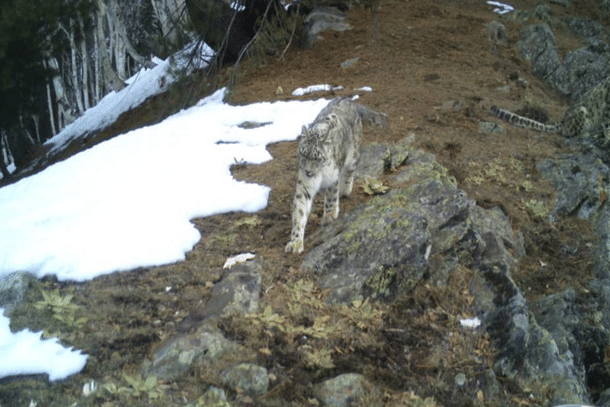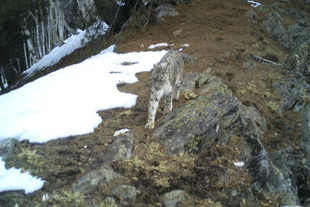Insta
J&K's 'Snow Leopard Project' Marks Success With Recent Confirmed Sightings In Kishtwar National Park
Swarajya News Staff
May 18, 2023, 03:49 PM | Updated 04:00 PM IST
Save & read from anywhere!
Bookmark stories for easy access on any device or the Swarajya app.


The Jammu and Kashmir Wildlife Protection Department recently confirmed the presence of several snow leopards at Kishtwar National Park through camera trap sightings.
This achievement is the result of months of strategic planning by the department.
In August 2019, the state was split into two Union territories (UTs). The Ladakh Himalayas were known for snow leopards and research used to be conducted there.
The Chief Wildlife Warden of Jammu and Kashmir (J&K), Suresh Kumar Gupta, proposed a 'snow leopard project' to the Centre after Ladakh became a separate UT.
The Centre recommended seeking guidance from the Nature Conservation Foundation in Mussoorie, which became the "knowledge partner" in the project. Funds were allocated by the Centre last year for the project.
J&K's wildlife department conducted a survey and installed camera traps. They also collected information from nearby nomads and checked droppings, and even hair of snow leopards.
Gupta's efforts succeeded, as camera trap images confirm.
According to Gupta, camera traps deployed in two catchment areas of the 2,195 sq km national park — Marwah and Dachhan — have recorded images of three snow leopards in Renai.
He suspects the leopards to be a mother and her two cubs.
Two snow leopards were recently captured on camera traps in the Nant Nullah region, Gupta said. Additionally, one was also seen in the Kyar and Kibber catchment areas.
While six to eight snow leopards have been confirmed in the Kishtwar High-Altitude National Park, there could be more as camera traps are still being retrieved from snowy areas.
These details were shared by the UT's wildlife chief, who spoke to The Indian Express.
The department set up 90 cameras in the national park and around 25 in surrounding areas.
The snow leopard is classified as vulnerable by the International Union for Conservation of Nature (IUCN) due to their rapidly decreasing population, which is thought to number less than 10,000 mature animals worldwide.
These large felines typically inhabit areas above the tree line in alpine meadows and rocky terrain, residing at elevations ranging from 2,700 metres to 6,000 metres during summer before descending to lower altitudes of 1,200 metres to 2,000 metres in winter.
Kishtwar National Park is located in the district bearing its name, bordering the Zanskar area of Ladakh. It has an altitude range of 2,300 metres to 6,000 metres.





